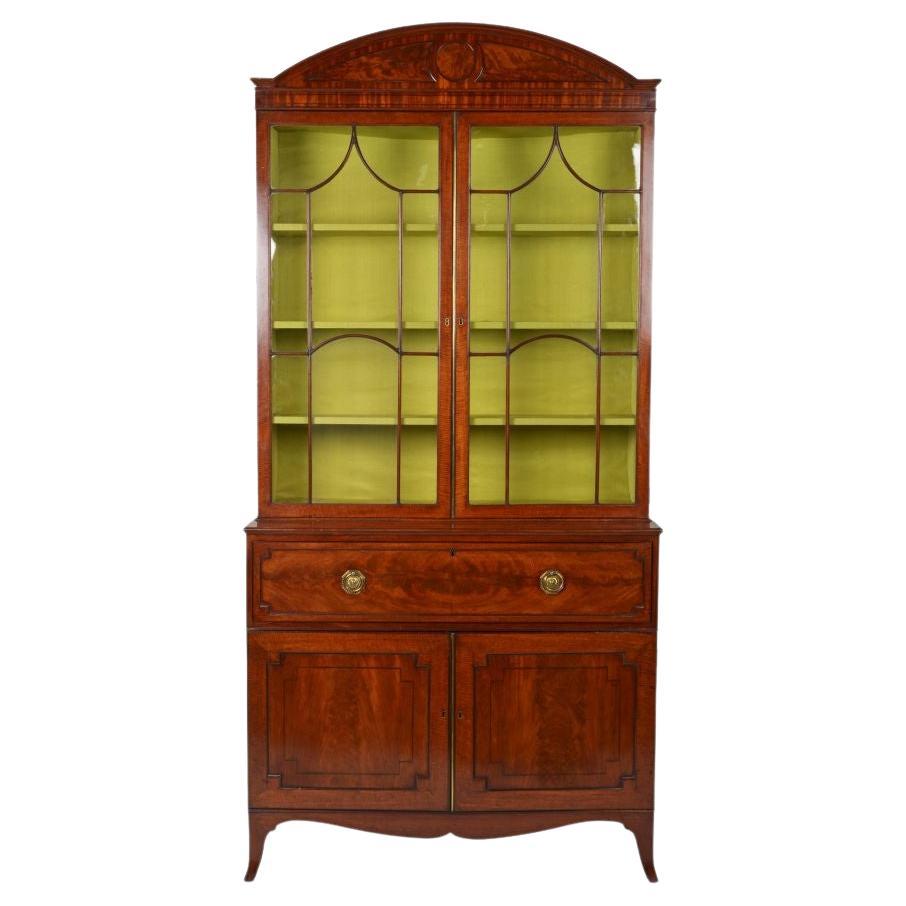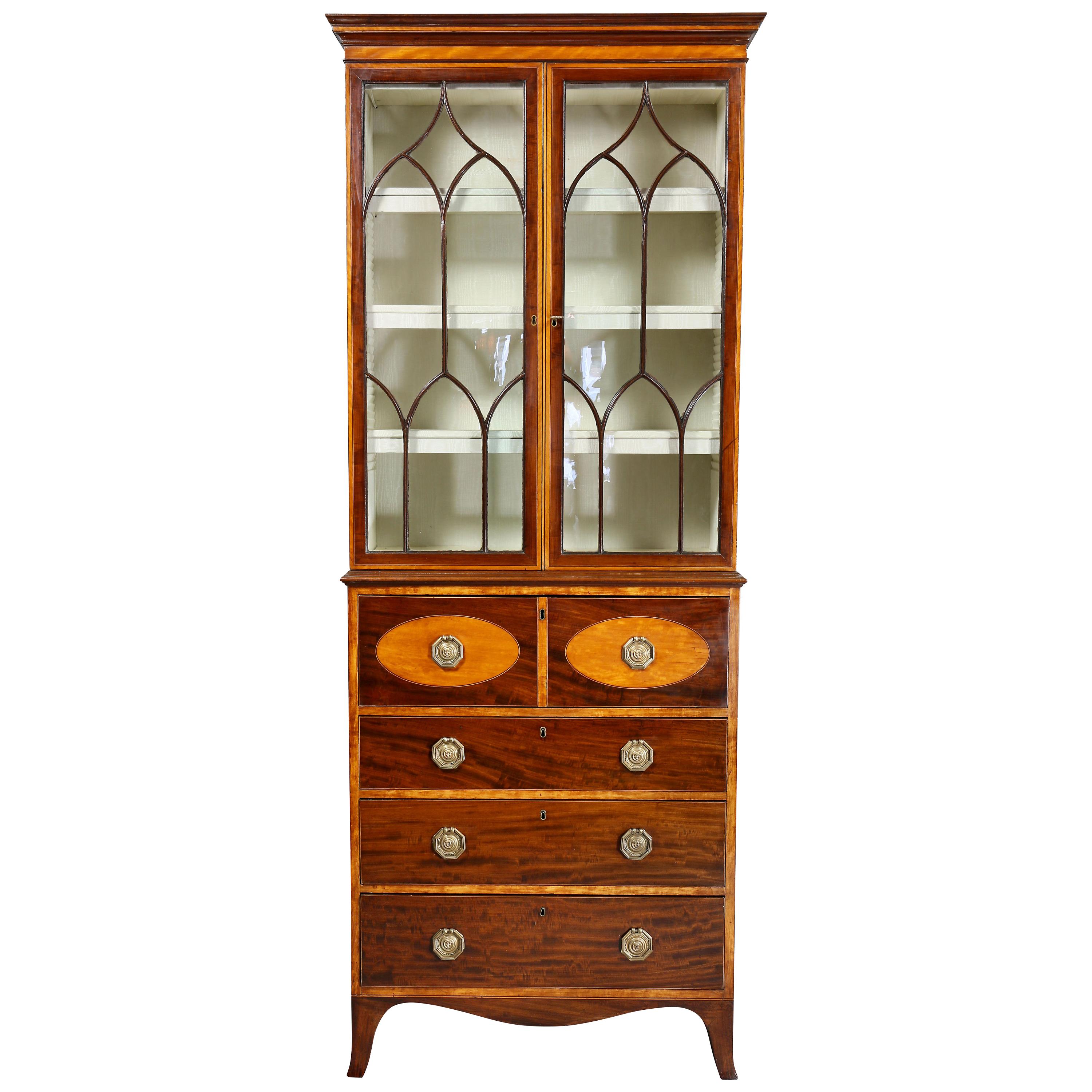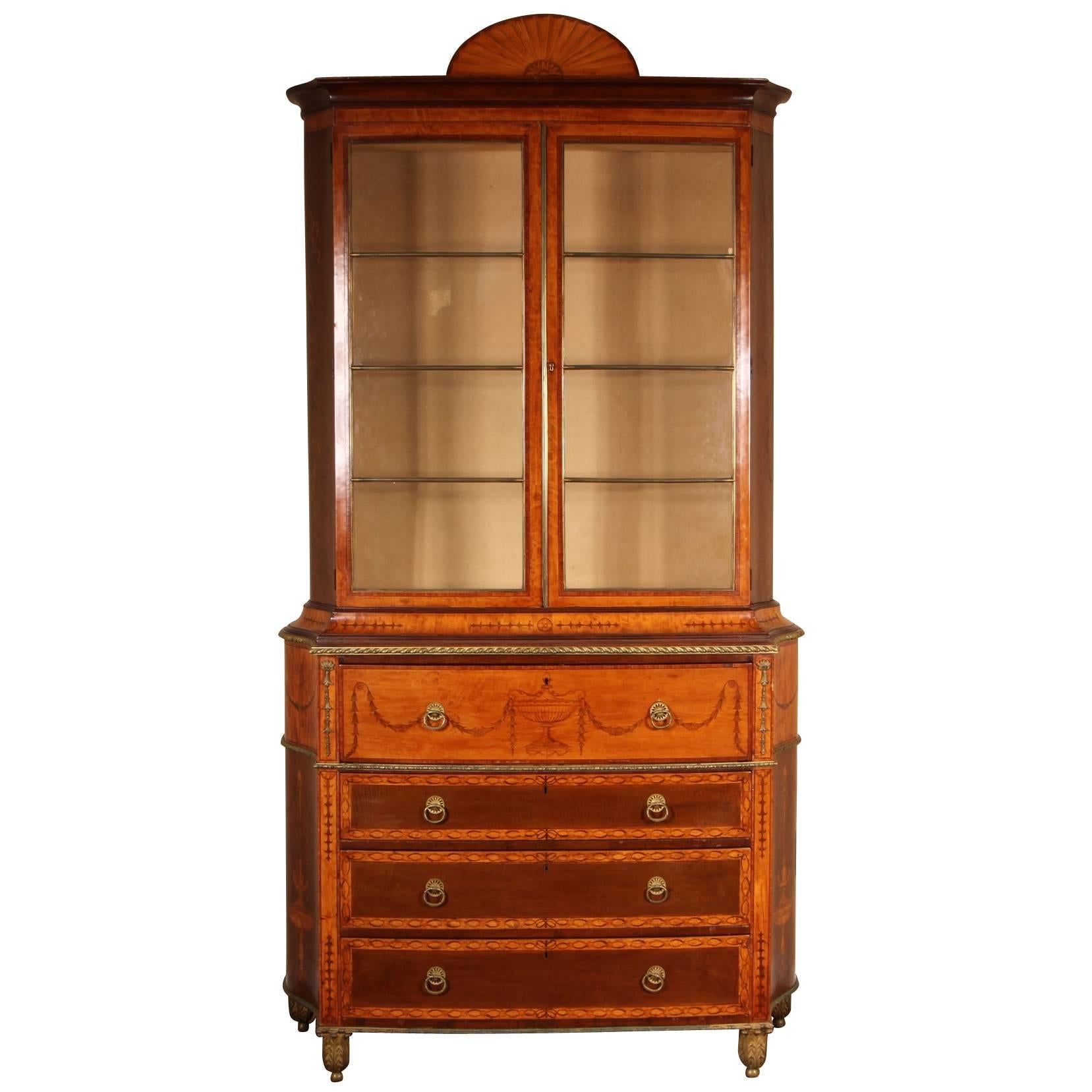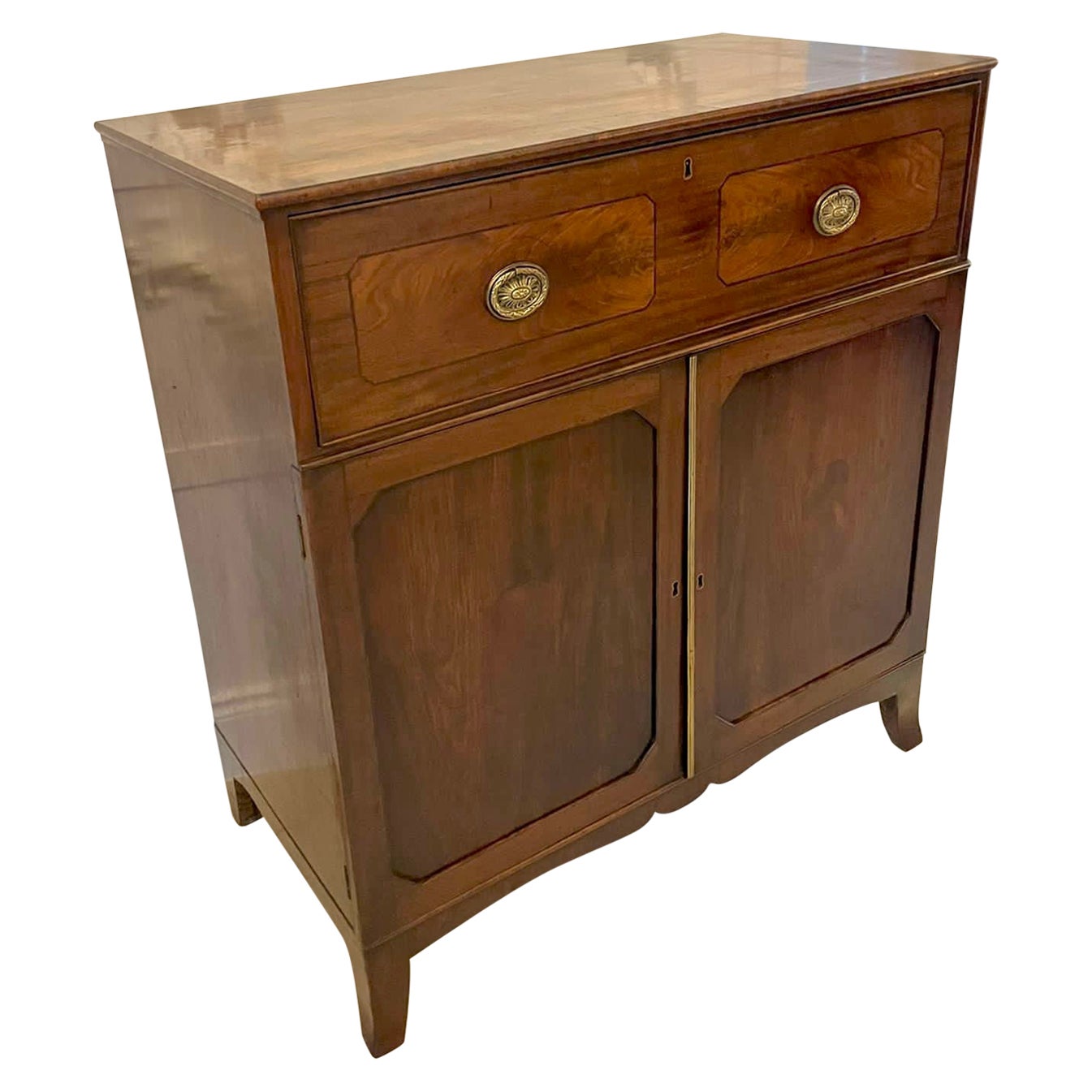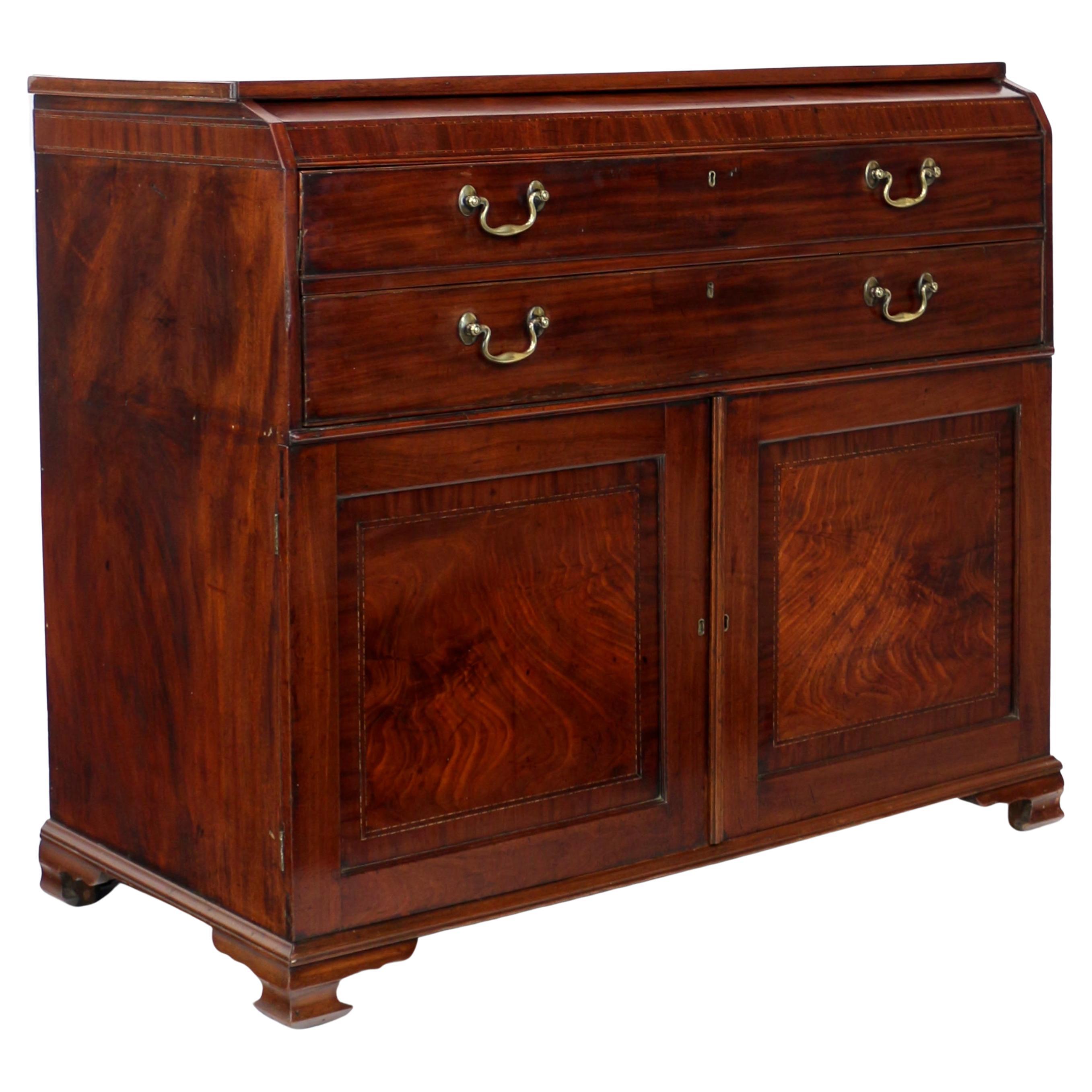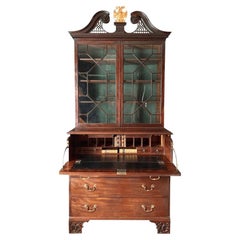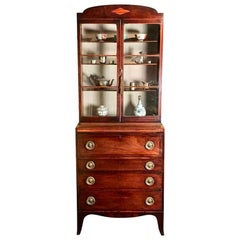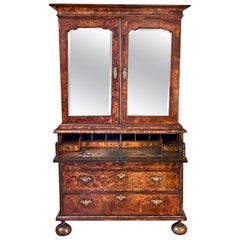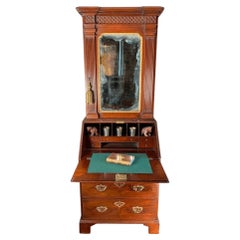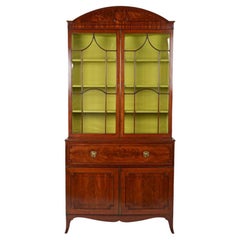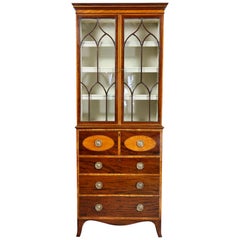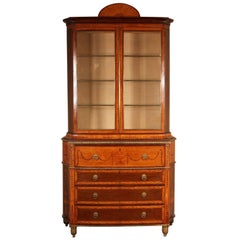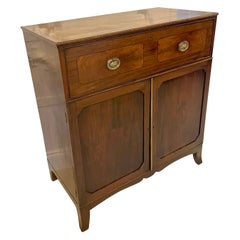Items Similar to Fine Gillows George III Period Satinwood Secretaire Cabinet
Video Loading
Want more images or videos?
Request additional images or videos from the seller
1 of 10
Fine Gillows George III Period Satinwood Secretaire Cabinet
$20,083.98
£14,850
€17,581.36
CA$27,767.86
A$31,104.67
CHF 16,337.30
MX$378,222.79
NOK 206,883.52
SEK 196,388.09
DKK 131,216.49
About the Item
An exceptional English Sheraton-period satinwood secretaire cabinet. Attributed to Gillows.
Late-18th century, George III, ca 1790.
Measures:
H 59 1/2’’ (151 cm)
W 30’’ (76 cm)
D 19’’ (49 cm).
This small, beautifully-proportioned, and sophisticated antique writing cabinet (without doubt by the prestigious firm of Gillows & Co) is in well-figured West Indian satinwood all of the highest quality, with lovely colour and surface patination throughout.
The top detachable section contains three adjustable shelves.
The base has a pull-out writing section with an arrangement of small drawers and pigeon holes. Sandalwood linings.
Two cupboards below – with adjustable shelving within – flanked by gently tapering, reeded columns.
In perfect condition throughout and ready to use.
Gillows of Lancaster and London, also known as Gillow & Co., was an English furniture-making firm based in Lancaster, Lancashire, and London.
Literature:
Lindsay Boynton 'Gillow furniture designs, 1760-1800' (1999).
Gillows: a record of a furnishing firm during two centuries by Gillow & Co.
Examples of furniture & decoration by Gillows by Waring & Gillow (London) 1908.
Sarah C. Nichols 'Gillow and Company of Lancaster, England: an eighteenth-century business history' (1982).
M. E. Burkett 'The furniture of Gillow of Lancaster' (1971).
- Dimensions:Height: 59.45 in (151 cm)Width: 29.93 in (76 cm)Depth: 19.3 in (49 cm)
- Style:George III (Of the Period)
- Materials and Techniques:
- Place of Origin:
- Period:
- Date of Manufacture:circa 1790
- Condition:Repaired: Minor historic re-attachment of old veneers. Very skilfully executed indeed. Now in superb condition throughout and ready to use. Wear consistent with age and use. Minor historic re-attachment of old veneers. Very skilfully executed. In perfect condition throughout and ready to use.
- Seller Location:Lymington, GB
- Reference Number:Seller: BHA 11371stDibs: LU4081127063322
About the Seller
5.0
Vetted Professional Seller
Every seller passes strict standards for authenticity and reliability
Established in 1957
1stDibs seller since 2018
36 sales on 1stDibs
- ShippingRetrieving quote...Shipping from: Lymington, United Kingdom
- Return Policy
Authenticity Guarantee
In the unlikely event there’s an issue with an item’s authenticity, contact us within 1 year for a full refund. DetailsMoney-Back Guarantee
If your item is not as described, is damaged in transit, or does not arrive, contact us within 7 days for a full refund. Details24-Hour Cancellation
You have a 24-hour grace period in which to reconsider your purchase, with no questions asked.Vetted Professional Sellers
Our world-class sellers must adhere to strict standards for service and quality, maintaining the integrity of our listings.Price-Match Guarantee
If you find that a seller listed the same item for a lower price elsewhere, we’ll match it.Trusted Global Delivery
Our best-in-class carrier network provides specialized shipping options worldwide, including custom delivery.More From This Seller
View All18th Century Mahogany Secretaire Bookcase China Cabinet
Located in Lymington, GB
A fine English mid-18th century mahogany secretaire / secretary / bookcase / china cabinet.
Of lovely, deep, rich color, patina and quality.
George III-period, circa 1760.
The bold, detachable, swan-neck pediment carved with 'Gothic' open fretwork, spiral rosettes and a dentil cornice.
The pediment is centred by a small platform below which is a fluted panel. The bookcase / china cabinet section with two, thirteen-pane glazed doors, with three original adjustable shelves with applied beadings for the display of china etc.
The base with a pull-out writing section fitted with small drawers, two of which have secret releases. These secret drawers are faced with blind-fret 'Gothic' tracery, and centred by a carved, shaped arch.
The base with three cock-beaded drawers, and raised on its original bracket feet which are faced with blind fret.
This fine, sophisticated and well-proportioned example of a secretaire / secretary / cabinet / desk / bookcase is remarkable for having survived in its original state including all swan-neck handles and locks.
Of superb quality, color, patination, and well figured throughout. With mahogany drawer linings: further confirmation of its superlative quality.
Measures:
42" wide (107 cm)
23" deep 58.5 cm)
95" high (241 cm) - without cartouche.
A related antique bureau cabinet...
Category
Antique 1740s English George III Cabinets
Materials
Mahogany
Small 18th Century Mahogany Secretaire Bookcase
Located in Lymington, GB
A small late 18th century secretaire bookcase / cabinet.
George III period, circa 1790.
Of very good rich color.
Inlaid and crossbanded throughout.
Only 2'5" wide.
Mounts are corre...
Category
Antique 18th Century Bookcases
Materials
Mahogany
A Fine Old & Ody George I Burr Walnut Secretaire Cabinet
Located in Lymington, GB
A fine English George I-period burr (burl) walnut secretaire cabinet attributed to Old & Ody.
Early-18th century, ca 1720.
The top section separates from the base and opens to reveal numerous fitted drawers, behind doors with original bevelled arched mirror plates.
The base contains a fall-front fitted secretaire with small drawers, two of which have secret drawers. Engraved mounts are contemporary if not original. All locks and cross-grained mouldings are original.
Beautiful deep rich colour throughout, with superb matched burr veneers within herringbone lines.
Bun feet are original. Lined throughout in best-quality English oak.
The well patinated, green, gilt-tooled liner in the writing surface appears original. In excellent condition overall.
Very much in the style of John Old & William Ody.
One of the most original early-18th century pieces of English walnut cabinet...
Category
Antique 18th Century English George I Cabinets
Materials
Walnut
Small Size Mid-18th Century Mahogany Bureau Bookcase or Cabinet
Located in Lymington, GB
A small-sized mid-18th century mahogany bureau bookcase / cabinet.
George II-period, ca 1740.
This diminutive Georgian bureau bookcase – als...
Category
Antique 18th Century English George II Bookcases
Materials
Mahogany
George I Walnut Secretaire Kneehole Desk
Located in Lymington, GB
An early-18th century English walnut secrétaire kneehole desk.
George I-period (1714-1727), circa 1720.
Of exceptional waxed honey colour and lovely old patina, with well-matched veneers.
With a quarter-veneered top. Six short drawers below a hinged fall revealing a writing section, all surrounding a central recessed cupboard. There is a small, shaped pull-out drawer fitted in the apron.
All finely inlaid with herringbone lines. Raised on its original bracket feet. Swan-neck handles probably fitted later in the 18th century. Locks and keys are mostly original. Walnut veneered and crossbanded sides.
Nb. Having a fitted secrétaire (secretaire) drawer distinguishes this antique walnut kneehole desk...
Category
Antique Early 18th Century English George I Desks
Materials
Walnut
Rare small early-18th century walnut bureau bookcase cabinet
Located in Lymington, GB
A rare, small, English early-18th century walnut bureau bookcase/ cabinet with a moulded swan-neck pediment. Circa 1727-1730. On the cusp of George I- into George II-period.
The bev...
Category
Antique 18th Century English George I Bookcases
Materials
Walnut
You May Also Like
Fine George III Flame-Figured Mahogany Secretaire Cabinet
Located in New York, NY
The arched pediment centered by paneled roundel, over two glazed doors with pointed astragals opening to a chartreuse silk-lined interior with shelves; the lower part with a pullout ...
Category
Antique Early 1800s English George III Secretaires
Materials
Brass
Fine George III Diminutive Mahogany and Satinwood Secretaire
Located in Essex, MA
With rectangular cornice over a pair of gothic mullioned doors enclosing a fitted interior, the base with drawer enclosing a fitted desk interior all over three drawers ending on spl...
Category
Antique 1790s English George III Secretaires
Materials
Mahogany
Superb George III Style Inlaid Marquetry Secretaire Cabinet
By Mayhew & Ince
Located in Bridgeport, CT
Magnificent antique English Secretaire cabinet with satinwood, hare wood, tulipwood, and kingwood marquetry, of monumental form, in two parts. The upper section with molded cresting ...
Category
Antique 19th Century English George III Secretaires
Materials
Kingwood, Satinwood, Tulipwood
Antique George III Quality Figured Mahogany Secretaire Desk/Cabinet
Located in Suffolk, GB
Antique George III quality figured mahogany secretaire desk/cabinet having a quality figured mahogany crossbanded top with a moulded edge above a secretaire drawer with original bras...
Category
Antique 19th Century English George III Cabinets
Materials
Other
Gillows Antique English George III Mahogany Secretaire Low Press Cupboard
By Gillows of Lancaster & London
Located in Glasgow, GB
circa 1790. With a rectangular top over a concealed long drawer with sloping front, mahogany crossbanding and parquetry and box stringing which continues across the top of the sides...
Category
Antique Late 18th Century English George III Secretaires
Materials
Brass
Unusual Antique George III Quality Figured Mahogany Double Secretaire Desk
Located in Suffolk, GB
Unusual Antique George III quality figured mahogany double secretaire desk having a figured mahogany crossbanded top above two secretaire drawers with original brass lions head hand...
Category
Antique 19th Century English George III Desks
Materials
Other
More Ways To Browse
Antique Records
Antique Gillows Furniture
Record Shelves
Warring And Gillow
Gillows 18th Century
Gillow And Co
Small Indian Cabinets
Indian Antique Columns
Antique Sandalwood
W Lancaster
Antique Indian Cupboard
Mid Century Secretary Desk
Antique Painted Secretary
Antique Slant Top
Modern Secretary Desk
Bureau Secretaire
Secretary Desk Used
Antique Wood Secretary Desk
